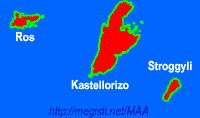Cast Arrows
 |
| (Click to Enlarge) |
St. Valentine's Day is still a couple of months away, but that doesn't mean there's not enough love to spread around at Hanayama headquarters. An original design by Russian Andrei Ivanov, the Cast Arrows will be a difficult heart to conquer.
This is quite a captivating and intriguing design, one that truly manages to puzzle even the most brilliant minds... Well, not quite that hard, but still challenging enough to scratch a few heads. This is rated as a difficulty level 3/6 by the manufacturer, but to be honest, I'm more inclined to classify it as a level 4.
The puzzle is comprised by a set of four arrows piercing the central heart-shaped piece. They all look identical, but a close inspection will show you otherwise. There's an opening in the heart that let's the arrows move in a somewhat free way, but still narrow enough to keep you guessing how the arrows should be positioned throughout the solving process.
 |
| (Click to Enlarge) |
I found that this puzzle is more about dexterity than logic. There were many times where I wanted one of the arrows to move to a certain position, but trying to move one particular arrow while keeping the other three still, proved to be much more work than expected. There are four arrows, but only two hands to handle the...
This is why I think the puzzle is a little more challenging than advertised. Yes, it's not that difficult to figure out how to solve it. It's just that, the process in itself is more difficult to execute. It's not enough to make the puzzle frustrating, though. Once you solve it, it's quite a rewarding feeling. Putting it back together might also be quite challenging.
 |
| (Click to Enlarge) |
Solution: You can download the solution here.
Closing Comments:
The Cast Arrows is quite a unique design. It looks a lot like one of those impossible tricks where you try to figure out how the hell did they put it that way. It's a great puzzle to show to your friends and family, and to see how they react when you solve it.
Availability: You can find a copy of the Cast Arrows at PuzzleMaster. If you like Hanayama, check out the entire collection of Cast Puzzles.
Availability: You can find a copy of the Cast Arrows at PuzzleMaster. If you like Hanayama, check out the entire collection of Cast Puzzles.







































